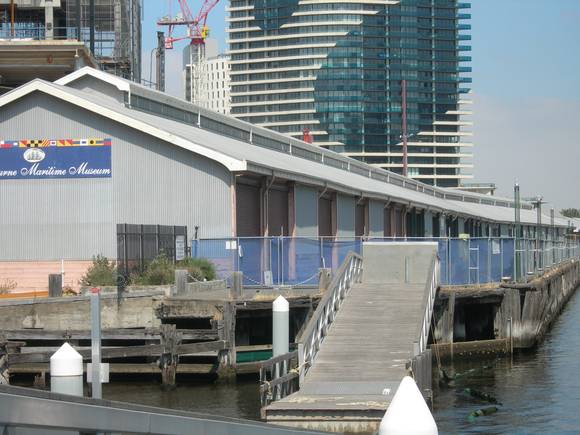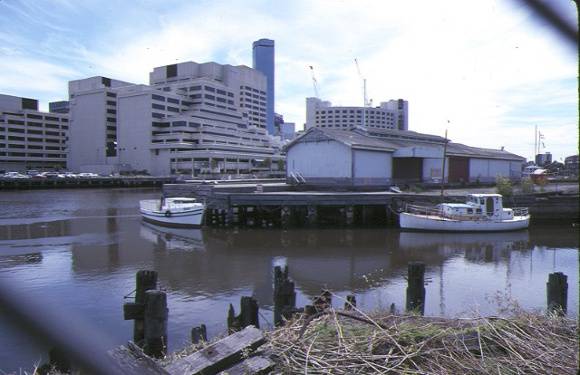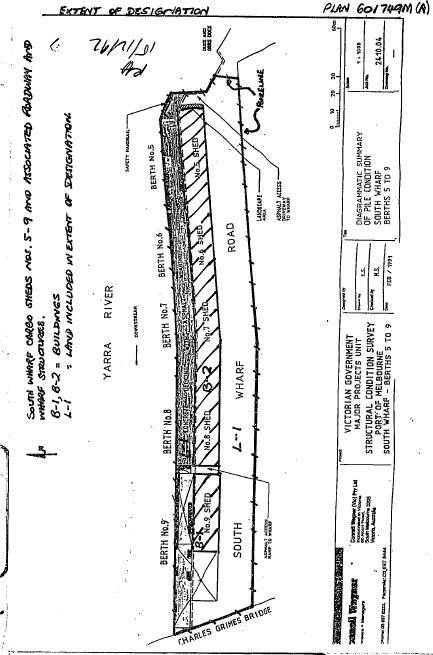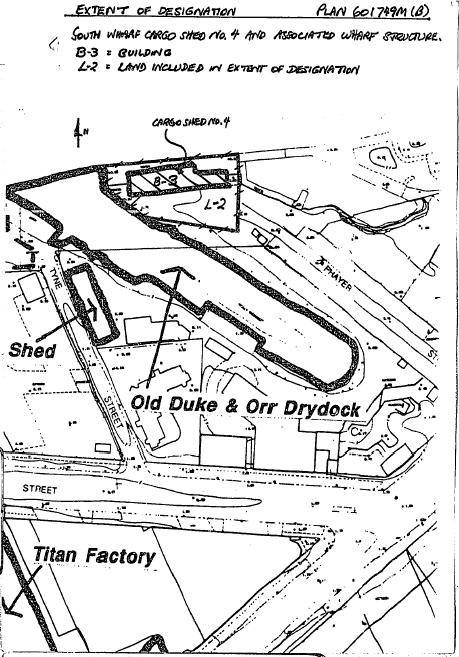| Back to search results » | Back to search page » |
|
CARGO SHEDS 4, 5, 6, 7, 8, 9
Other NamesSHED 4 , SHED 5 , SHED 6 , SHED 7 , SHED 8 , SHED 9 Location4-9 SOUTH WHARF ROAD SOUTH WHARF, MELBOURNE CITY
File Number601749LevelRegistered |
|
Statement of Significance
1. The Cargo Sheds No. 4 and No. 5-9 South Wharf represent the last (in situ) remaining link with the cargo and berthing facilities of the nineteenth century river port of Melbourne, originally extending to Queen's Bridge, and is now the most eastern part of the port of Melbourne. 2. The Sheds, and associated wharfing, illustrate the small scale methods of cargo-handling direct from ship to wharf, in the era of trans-shipment and before the introduction of roll-on roll-off and container shipment. They have been in use for cargo-handling for over 60 years. 3. They also represent an important transitional link between the period of smaller shallow draught trading vessels and the age of larger vessels involving greater draughts, tonnage and length. 4. Cargo Shed No.9 Wharf, built in 1884, is the oldest cargo shed in situ along the river within the Port of Melbourne. Whilst its fabric has been partially destroyed by fire, the remaining shed provides sufficient evidence to illustrate the style of construction including the unusual truss design, alignment with the river, and association with the once thriving maritime industry within close proximity of the city of Melbourne. It is a unique survivor of a once-common building practice in the transport industry. 5. Cargo Sheds No.4 and Nos 5-8 South Wharf between 1929-31 reflect the construction principles of the early twentieth centuries including roller shutter doors at regular intervals rather than sliding doors, flexible open floor plan enabling berths to be allocated as required, and ridge lantern lighting for security and lighting. 6. The access roads to sheds number 5-9 (south wharf road) displays evidence of bluestone cobbles, and contains some of the earliest macadamised roadway within the port of Melbourne. 7. The sheds and wharves are also closely associated with the heart of Melbourne's ship building and marine engineering industry, carried out on the south bank of the river from the 1850s. As the focal point for Melbourne's commercial shipping trade, the Yarra River in the vicinity of Spencer Street Bridge was an important location for the repair, maintenance and construction of cargo vessels. It is significant that this area survives in close proximity to the commercial centre of the city of Melbourne. The historical importance of the sheds and wharves is therefore enhanced by their location within an area that still retains its nineteenth century maritime character. The sheds themselves also make a significant contribution to the maritime precinct. Other elements include the Robur Tea House and Buchanan and Brock, engineering workshop, the Duke and Orr Dock, former Titan Wire Products factory, the amalgamated marine engineers building and the "Polly Woodside".
Group
Commercial
Category
Warehouse/storage area







